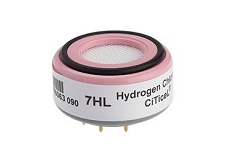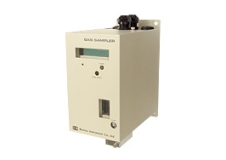Hydrogen Chloride
Hydrogen chloride is a colourless gas with chemical formula HCl. Hydrogen chloride may be formed by the direct combination of chlorine and hydrogen gases. Hydrogen chloride is commonly prepared both on a laboratory and on an industrial scale. Upon contact with atmospheric water vapours, it forms white fumes of hydrochloric acid.
Most hydrogen chloride (HCl) is used in the production of hydrochloric acid. It is also an important reagent in other industrial chemical transformations, such as the hydrochlorination of rubber and production of vinyl and alkyl chlorides. Other industries or applications where high levels of hydrogen chloride may occur include petrochemical facilities, cotton production, metal pickling, rubber manufacturing, and semiconductor manufacturing.
Occupational Health / Toxicology
Hydrogen chloride is irritating and corrosive to any tissue it contacts. Depending on the concentration, hydrogen chloride can produce from mild irritation to severe burns of the eyes and skin. Long-term exposure to low levels can cause respiratory problems, eye and skin irritation, and discoloration of the teeth. Other effects of exposure include shock, circulatory collapse metabolic acidosis, and respiratory depression.
Elemental Hydrogen chloride at high concentrations is extremely dangerous and poisonous for all living organisms. Therefore, hydrogen chloride gas detection must be considered. Noventis offer a wide range of technologies to detect early emissions of Hydrogen Chloride, both addressable and legacy 4-20mA analogue, in the form of safe area and hazardous rated HCL gas detector. Contact us for more options or select an instrument below for more details.
Gas Specifications
- Gas Name: Hydrogen Chloride
- Formula: HCl
- CAS No.: 7647-01-0
- TWA: 2 ppm
- LEL: Not Explosive
- Density relative to air: 1.26



